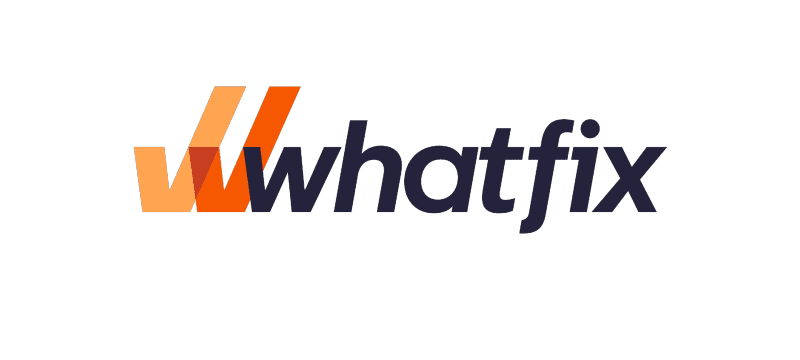The future of learning: Making knowledge accessible for everyone
Discover the top reported challenges faced by your peers in the L&D community when it comes to training a remote workforce.
Learn some of the best practices in delivering digital learning that’s instant, contextual, and experiential.
Harness the opportunity of digitally upskilling your employees.


The pandemic has inevitably changed how organizations work and learn. But even after the immediate crisis has passed, remote work will continue to render traditional employee training methods redundant. And with skills thrust into the spotlight like never before, many L&D leaders are under pressure to act quickly.
Meanwhile, the acceleration of digital learning is irrevocable. So now it’s time for L&D leaders and practitioners to regroup. What are your plans for your longer-term strategies and methods to support the ongoing development of a distributed workforce?
UNLEASH was delighted to partner with Whatfix to explore how enterprises are reimagining the digital upskilling of their workforce, especially as companies continue to invest in more new platforms and solutions to support their people during tough times. These technologies are often chosen with the best intentions but are no good if the people they are bought for can’t – or won’t – use them.
In this on-demand webinar, Adam Littler, Enterprise Manager at Whatfix, a US-based in-app guidance and performance support solution, and Kate Graham, Head of Content Labs and Insights at UNLEASH, discuss digital learning in the age of COVID-19. Watch the full video to learn how you can approach digital learning to ensure you get the best results, and read on for some of the key takeaways.
Effective deployment is critical to protect your tech investments
The tech that people hope will propel them forward is, in fact, holding them back.
Adam Littler, Enterprise Manager, Whatfix
Executives see an emerging skills gap, particularly in the realm of technology adoption. According to Adam, the average organization (companies with 2000+ employees) uses up to 288 applications across the business. The average technology investment spend amounts to about $4 million annually, a number that has increased by 50% across the last two years.
But where is that spend getting you? Despite investments, the results are not necessarily positive: 90% of executives face significant skills gaps, and research shows that 70% of digital transformation projects fail due to employee resistance. It is critical that organizations understand the employee of today: we live in a world of instant gratification and on-demand access, and corporate learning must adapt.
Your training and knowledge transfer technology must be geared for the technical and demographic specifics of your workforce. Gone are the days when you could fly every employee to corporate for classroom training. Take advantage of the digital learning world to create personalized, experiential learning programs tailored to your employees’ specific needs, contexts, and preferences.
Understanding the limitations to learning in a remote world
As applications become more complex, [employee] workflows become more complex.
Adam Littler, Enterprise Manager, Whatfix
The cited increase in the employee skills gaps strongly correlates with the changes wrought by the pandemic. 2020 forced the world to make changes, and organizations are only now accepting that these changes need to be adjusted for longer-term changes in how we work. Employees have increasingly large toolkits at their disposal; simultaneously, they have an increasing responsibility to master these tools in an isolated environment.
70% of corporate learning is done through practical application. With so many employees learning on the job, knowledge must be available with the proper context as soon as people need it. Workers can no longer simply confer with a nearby colleague to learn how to use new platforms. With query response time on the rise following increasing support request volume, employers must understand that contextual and experiential learning is the only way to solve productivity problems in a remote world.
Solve universal problems with a Digital Adoption Platform
Most of the organizations that I speak to have issues, but they’re all very similar.
Adam Littler, Enterprise Manager, Whatfix
According to Adam, most average organizations share very similar challenges. Solving complex learning challenges in the age of instant gratification is something that L&D professionals face worldwide. Similarly, the shift from passive learning to on-demand expectations is a modern challenge that every organization must solve. The way people consume information has changed; what is your company doing to address that?
One way to solve this problem is the Digital Adopt Platform (DAP), which integrates analytics and provides personalized solutions throughout the employee journey. Despite the immense power of this technology, HR practitioners may lack a basic understanding: in a poll taken during the webinar, only 22% of respondents confidently knew what a DAP was, and 41% had never heard of it.
Effective DAP deployment begins with the underlying internal and external applications, categorizing them by access points to make them accessible and understandable to the end-user. Your solution should integrate with multiple application formats to be accessible across browsers, mobile, tablet, and desktop devices. Through the platform, you can manage contextual and experiential learning processes through various applications, ensuring step-by-step guidance throughout. By engaging surveys, feedback, announcements, and internal knowledge, a DAP will help you solve significant learning challenges shared by every organization.
Want to learn more? Watch our on-demand webinar, or check out Whatfix today.
